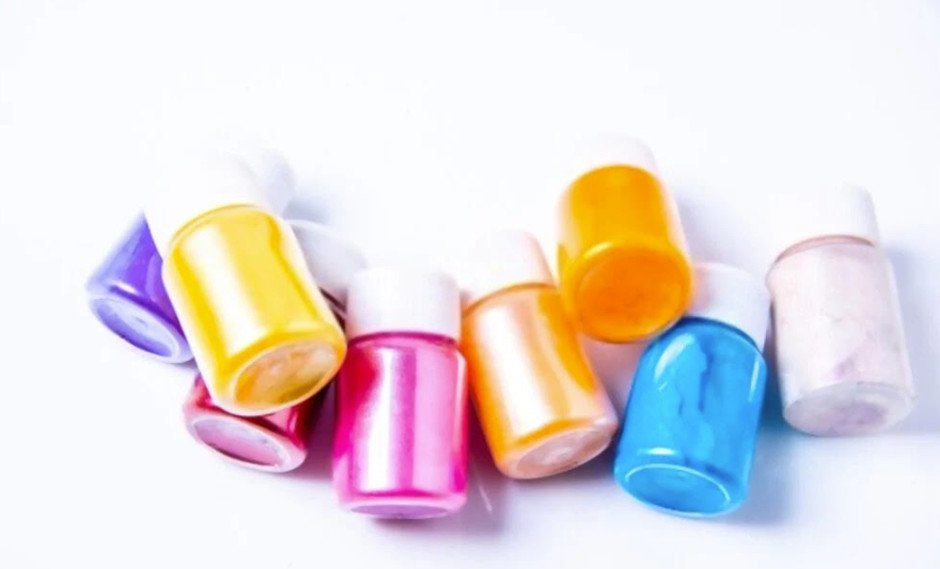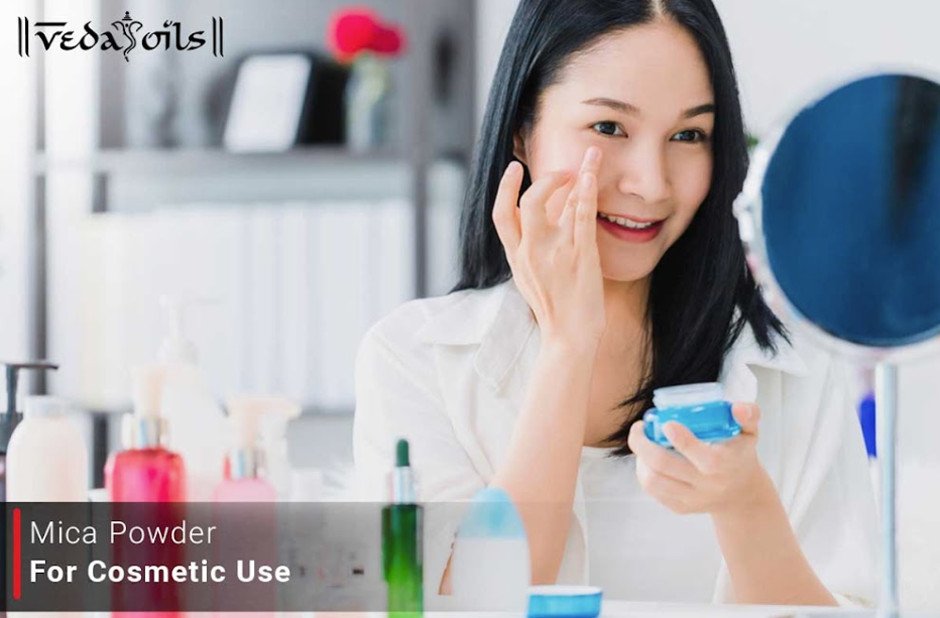Mica powder is a fantastic method to add individuality to your creations, whether you produce handmade soaps, jewellery, cosmetics, or other types of do-it-yourself home items. Mica powder comes in a range of hues and gives your homemade cosmetics a touch of glitz and glamour. Use metallic, pearlescent, or glittering finishes to make your cosmetics stand out.
Everything you need to know about mica Pigment powders for cosmetics will be covered in this tutorial. So read on and let’s get started!
What Is Mica Powder?
Mica powder is a natural mineral powder made from ground mica, a mineral that is mined from the earth. It comes in a variety of colors and can be used to add shimmer, glitter, and metallic effects to a wide range of homemade crafts, such as soap, cosmetics, and jewelry. It is versatile, non-toxic, and can be used to create a wide range of visual effects. The powder can be added to many different types of bases to create a range of effects.

Is Mica Safe for The Skin?
Mica powder is considered to be generally safe for use in cosmetics and other personal care products. However, the mining process of mica is known to have some negative impacts on the environment and human rights.
It is essential to be aware of the source of mica powder and ensure that it is obtained through ethical and sustainable means. Additionally, some people may have an allergic reaction to mica powder, so it is recommended to do a patch test before using it on a larger area. Overall, when sourced responsibly, mica powder is considered safe for use in cosmetics and personal care products.
Is Mica Safe in Makeup?
Mica is a colour additive that is safe for use in skincare and cosmetic products as well as on the lips. In the end, you should search for mica powders that have been tinted with D&C dyes or natural oxides.
Most mica powders may be used in lip gloss or lipsticks and are safe for lips. However, the FDA does not consider micas tinted with chromium oxide green or ultramarine to be lip-safe (although micas using these colours are lip-safe in Europe). However, the FDA has allowed these colourants for use in skincare and makeup products.
Uses Of Cosmetic Grade Mica Powder
You can use mica powder for a range of different things to make your cosmetics pop and shimmer and glitter! Mica must have a particle size of less than 150 microns in order to be able to be used in cosmetics . Larger particle sizes can irritate the skin, particularly near the eyes and lips. It should also be tinted using pigments that are safe for lips and/or skin.

Use 1: Eyeshadow
With just a few basic components, you can quickly create mica eyeshadow:
1/4 teaspoon each of arrowroot powder and mica,
three drops of sweet almond oil,
1/2 teaspoon of french green clay.
To achieve the ideal shade, first combine the french green clay, arrowroot, and mica. The sweet almond oil should then be added and combined until all of the powder has been absorbed. It’s ready for application.
Use 2: Skin Illuminator
This one is super simple.
Combine 2 teaspoons of jojoba oil, 1 teaspoon of coocnut oil,
and 1 tablespoon of beeswax.
The ingredients should then be melted using a double boiler. Once melted, incorporate your preferred mica hue, such as glittery silver.
Use 3: Foundation
Simple components like cocoa butter, almond oil, emulsifying wax, and bentonite clay may be used to create a natural foundation. Finally, you can simply add mica powder to change the colour of the foundation and add an illuminating shimmer.
Use 4: Lip Gloss
Any lip gloss or lip balm will shine and shimmer when made with lip-safe mica powders. A combination of oils (we love almond oil!), beeswax, and essential oils for natural flavouring are typically used in this DIY lip gloss..
Use 5: Body Glitter
You can immediately apply cosmetic-grade mica to your skin by blending it in a smoothie maker. Simple, high-shimmer body glitter works well with silvers, bronzes, and whites.
Conclusion
Mica is widely used in cosmetics, and this is because of all the advantages it offers to both makers and customers. Unlike some of the other natural mineral compounds, its usage does not irritate delicate skin. Mica is a crucial component that gives items a shimmering appearance. When applied to the skin, it gives the skin a young radiance. Mica fully deflects attention from the wrinkles and fine lines when it reflects light. At VedaOils, you can get the highest-grade cosmetic mica powder!
Frequently Asked Questions (FAQ)
Where Does Mica Come From?
Mica is a naturally occurring mineral that is mined from the earth. It is typically found in granite, schist, and gneiss rock formations. The largest deposits of mica are found in India, followed by Brazil, China, and the United States. Other countries that also produce mica include Russia, South Africa, and Madagascar. Mica can also be found in smaller deposits in many other countries around the world.
Is Mica Powder Good For The Skin?
Mica powder is considered to be safe for use in cosmetics and personal care products, including skincare. It is a natural mineral that is non-toxic and does not cause any known skin irritation. However, as with any product, it is important to do a patch test before using it on a larger area of skin, especially if you have sensitive skin or known allergies. Additionally, some people may have an allergic reaction to mica powder, so it is recommended to do a patch test before using it on a larger area. It is also important to be aware of the source of mica powder and ensure that it is obtained through ethical and sustainable means.
Is Mica Powder And Pigment Powder Different?
Mica powder and pigment powder are similar in that they are both powders that can be used to add color and visual effects to a wide range of products. However, there are some key differences between the two:
- Composition: Mica powder is a natural mineral powder that is made from ground mica, a mineral that is mined from the earth. Pigment powder, on the other hand, is a synthetic powder that is made from a combination of chemicals.
- Color: Mica powder is available in a variety of natural colors, such as gold, silver, and bronze. Pigment powder can be created in a wide range of colors, including those that are not found in nature.
- Transparency: Mica powder is naturally translucent, which means that it allows some light to pass through it. Pigment powder is opaque, which means that it does not allow light to pass through it.
- Use: Mica powder is mainly used in cosmetics, personal care products and crafts, while pigment powder can be used in a wide range of industries such as ceramics, paint, printing, and plastics.

